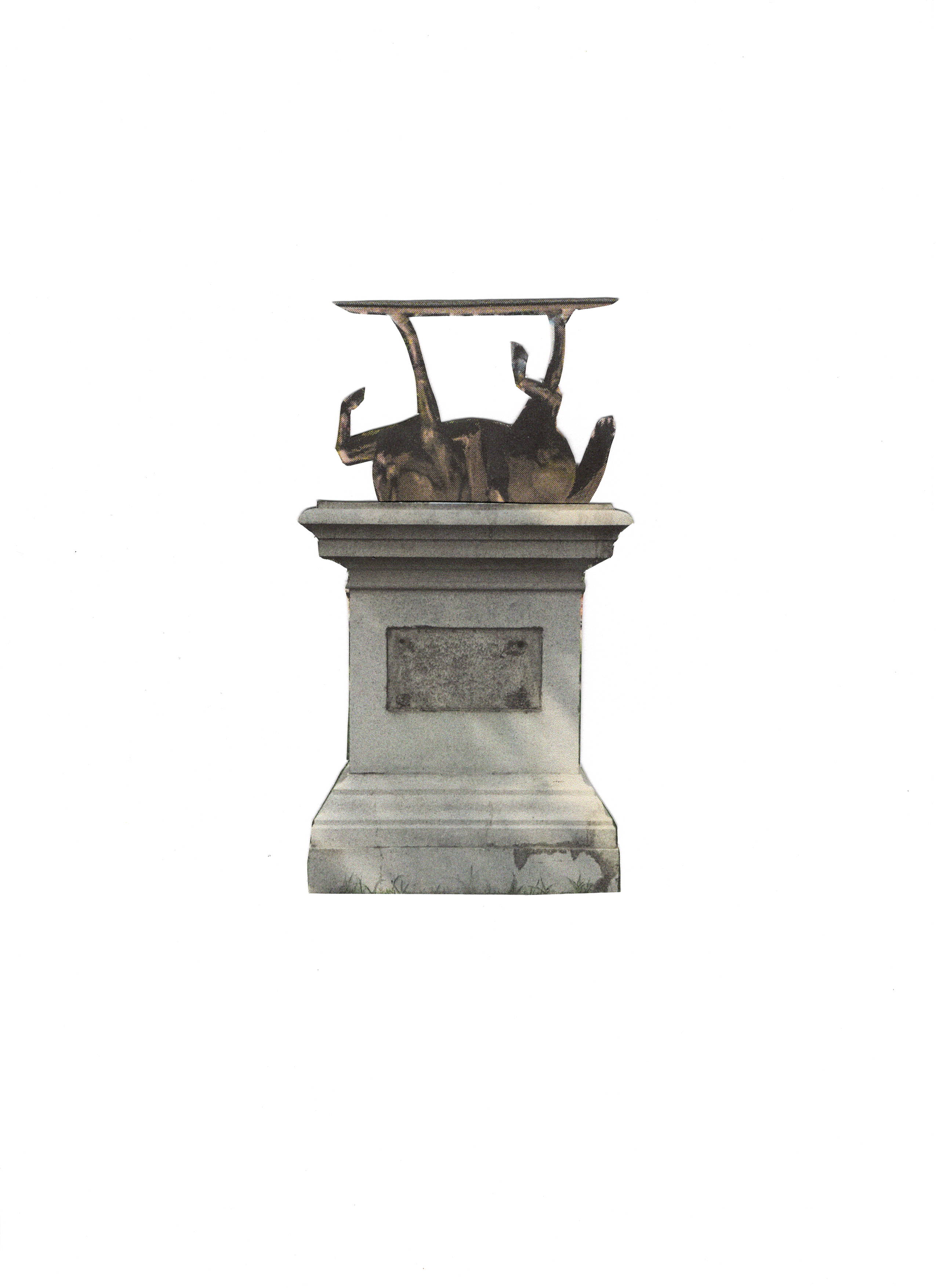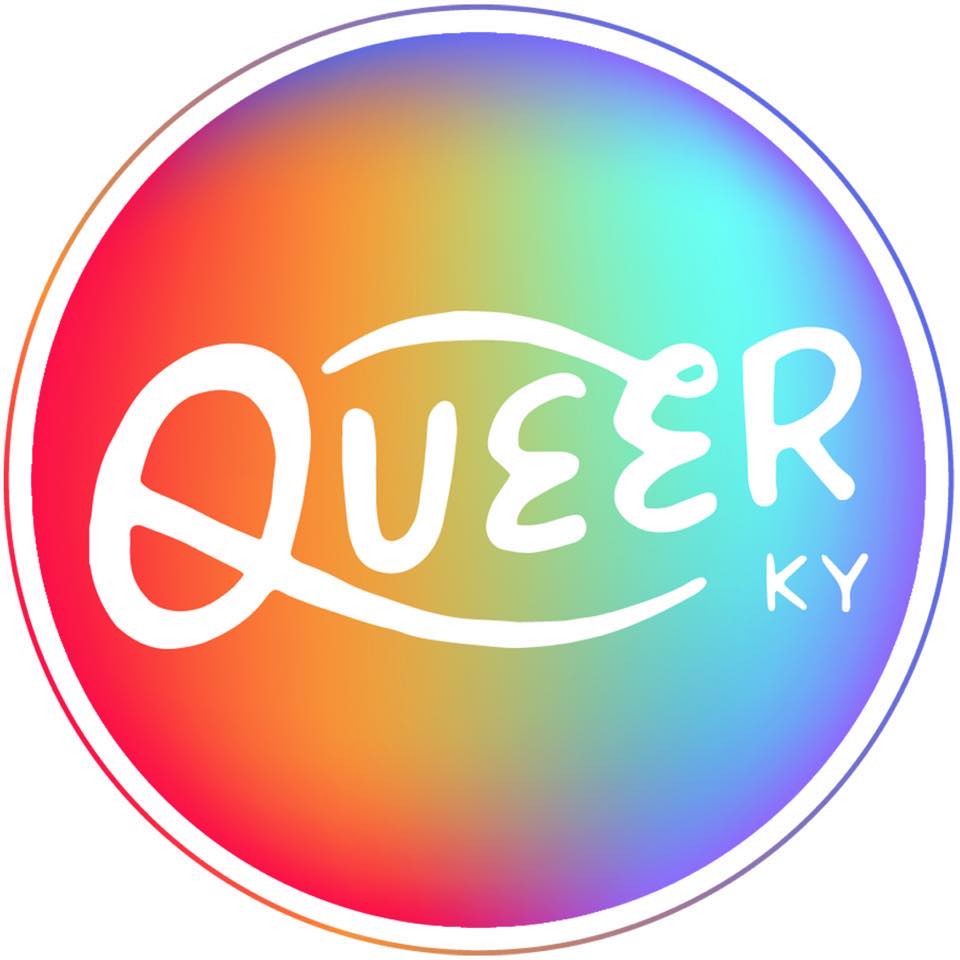

PHOTO: Castleman Set in Stone. Courtesy of the artist.
Removal as Muse
Thoughts On
Sean Starowitz
The recent national conversations around the role monuments play in our communities provide new opportunities to discuss what we choose to memorialize and why. Public spaces are permeated with monuments and memorials that act as larger symbols of our collective moral character. Public symbols like monuments are how cultures give power to meaning. Within the built environment, it has never been more pertinent to not only question who these public figures are, but what the creative acts of removal, recontextualization, and destruction could be.
Over the past few years, my interest in monuments has grown into an obsession. In 2017, I created a new course at Indiana University called “Set in Stone: Public Space and Memory in Changing Societies” where students were challenged to consider the history behind monuments and the public space they inhabit. Currently, my studio work exists in conceptual public art proposals for monuments and memorials; this is a natural byproduct of my day job being arts director for a small city in southern Indiana. Since occupying this duality (artist and public administrator), I’ve witnessed both unjust1 and encouraging2 approaches to how cities, communities, and local arts agencies are handling the process of removal and contextualization of monuments.
In 2018, my work was accepted to be a part of an exhibition Imagined Monuments with Louisville Visual Art Association (LVA) at Metro Hall in January 2019. The show was considering new monuments for Louisville, and the curator was interested in my vision after an initial studio visit. Being an ex-patriot of Louisville, I couldn’t help but consider the Castleman Monument site. This particular monument has been a point of contention due to whom it represents and its not-so-complex history. Located in a roundabout in one of Louisville’s premier neighborhoods, Cherokee Triangle, the Monument has been a target of community dissent and defacing in recent years.
The Castleman sculpture portrays a former Confederate officer, John B. Castleman, on his favorite mare, Carolina. He was the founder of the American Saddlebred Horse Association (the oldest horse breed registry in the United States) and is known as the “father of the Louisville Park System.” Castleman contributed to multiple regional parks, donating land for the Frederick Law Olmsted-designed Cherokee Park. However, Castleman was vocal about and in favor of segregation of the parks he helped create. While there is no direct connection from Castleman to the Lost Cause3 monuments and their funders, it's vital to note that this particular monument was created in the same time frame as many Lost Cause monuments in the early years of the 20th century.
The horse component of the Castleman sculpture is exquisitely rendered by artist Roland Perry and has been studied by numerous sculptors since its unveiling in 1913. As an established totem for the City of Louisville and the decadence of horse racing, horses have long symbolized freedom and resilience for other cultures. The intricate nuance of this particular monument beckons a collaboration with contemporary artists, neighborhood residents, and the City of Louisville. In times of gridlock between the neighborhood, community members, and the City —even if it’s a racist symbol—remaking this public sculpture can be a tool for community conversations that offer a vision of what else is possible.
Monuments to Fallen Monuments, my work submitted to Imagined Monuments, proposed a new monument that reclaims the horse as a sculptural element to foster a new conversation around the role of public art preservation and reinterpretation of art objects within a 21st-century narrative. The nuance of this particular monument struck me in a variety of ways; like Fred Wilson’s unrealized E Pluribus Unum, I wondered if this particular sculpture could be recontextualized and reimagined. In my research of various types of monuments, I’m intrigued by the horses that these individuals ride.4
Louisville is known for its love for horses, but it does not have any iconic equestrian monuments or sculptures. The standard collection of monuments and artworks represents a typical representation of public figures (mostly white men) and public art (also made mostly by white men, except for Ed Hamilton’s contributions to the City’s collection). Very rarely in the public art realm have we seen artistic explorations of the horse as a public figure. Unfortunately, the painted horses for tourists downtown don’t fit this aesthetic vision. The horse as monument was a captivating concept to consider for a new public monument as part of the Imagined Monuments exhibition.
After many sites visits, I offered three works that fit the bill for the show: some abstract monument proposals on overlooked sites throughout Louisville and Monuments to Fallen Monuments. The latter was removed by LVA at the bequest of City of Louisville. An employee of LVA stated, “So the upside down Castleman image is not gonna fly. I put it up and was installing other work when a couple hours later people from the mayor staff came out to talk about it. Sara was there as well. They felt tight between the difficulty of having it up and the difficulty of pulling an artists piece. They were not comfortable with either.”
So began the email exchanges of censorship against artistic freedom and intent, all of which offered no real resolution. The work was focusing on a particularly controversial subject, but I thought the conversation would be integral to the exhibition. My subtle response was “I propose the attached reimagining of the piece. It offers dialogue that both parties should find relevant to the conversation of what we should memorialize, what should we remove, what should we commission, etc. The piece offers mystery as to what is behind the covered tarp as well as opening dialogue to how we design and monumentalize public space.”
A thread of back-and-forth emails with lots of back-tracking offered clarity on the process of how LVA and Metro work with exhibitions. None of this was presented to me at any point during the creation of the work or the studio visits in 2018. LVA had included images from my website to present to the Public Art Commission in the early stages of selection. A completely different body of work was presented, which had nothing to do with my monument work. Due to this process, when my work deviated from the “aesthetic” framework, it gave LVA and the City grounds to remove my work, even though it was accepted by the curator at an earlier date. Additional grounds were that my work focused on an existing monument which no other artists in the show did. At the time of the initial studio visit the full concept of the show had not been completely fleshed out.
Overall, I learned that a proposed monument in a public building can’t be entertained or offered as a dialogue, but an inherently racist symbol in public space can. City halls, government buildings, and public spaces are where exactly these conversations need to happen. Monuments and memorials have never been more relevant, offering space for imperative dialogues in our communities. The implicit nature of monuments is no longer status quo. The ability to destroy these works of fiction or put new monuments adjacent to revise our history will give us the collective ability to confront shame, trauma, and sorrow. Governments, neighborhoods, and community members shouldn’t shy away from these approaches and conversations, but need to lean in—with and alongside each other. The creative genre of monuments, memorials, and public artworks (even the unbuilt or unrealized ones) will be testament of this ongoing work of dismantling white supremacy within our built environment.
The experiences with Monument to Fallen Monuments helped lay the foundation for work on display currently at the KMAC Triennial. Removal became a muse. The creative act and ritual of removal is similar to death rites and larger scale community processes that confront trauma and affliction. With the recent monument removals in various cities across the United States, public works employees wear body armor and masks to protect their identity and remove them at random hours. These individuals receive numerous death threats, and the former Mayor of New Orleans had his car firebombed. I understand the concern for public safety, but white supremacy needs to be confronted daily and visibly. I became obsessed with the framework of how death can begin a regenerative process—not of mourning, but confrontation.
The installation at KMAC is a public proposal for an unidentified public monument. The project reflects on the process of removal as a specific moment for creative destruction. Death is not the End: A proposal for confronting White Supremacy within the Built Environment transforms the unidentified monument into a casket spray with locally sourced native plants and flowers. This gesture of adornment gives passage to the idea of regeneration and death. Instead of commissioning new works to replace old plinths, this project reimagines a monument as a communal social space for a funeral and its procession. The site of the sculpture becomes the focal point through a multi-week program.5 Once the monument is removed from its plinth, it will be loaded into a hearse and taken off site for further discussion about its future. The plinth remains in place as a call to action and a temporary memorial to the trauma of cultural singularity within public space.
As an artist working in the built environment, I'm trying to dismantle my whiteness and unpack the trauma of cultural singularity of designed spaces. White artists, designers, and architects have dominated the field in public space design. The work of white artists addressing topics of race, cultural identity, and the built environment have historically used the perspective of the white gaze through the lens of otherness.6 A thorough investigation, internally, of whiteness is needed, without exploiting the trauma, terror, or pain of marginalized communities. While this project shouldn’t foster white fragility, the process of Death is not the End is to give space to those who have yet to confront their privilege and implicit bias. The investigation of whiteness is long, steady, and unhesitating. Public art can and should leverage projects and concepts to disrupt and offer an invitation towards truth and reconciliation. Eliminating these monuments without a public process of removal, deconstruction or reimaging (when appropriate) denies the opportunity to revise our history collectively.
-
The KMAC Triennial: Crown of Rays is on display at KMAC Museum through December 1, 2019.
KMAC Museum is located at 715 W Main St, Louisville, KY 40202, and is open Tuesday - Saturday 10a-6p, Sunday 10a-5p.
Notes:
- Prabhu, Maya T. “Georgia House approves bill protecting Confederate, state monuments.” The Atlanta Journal-Constitution. March 28, 2019.
- Mirzoeff, Nick. “How Do We Address a Statue of President Roosevelt That Affirms Racist Hierarchies?” Hyperallergic. September 24, 2019.
- Southern Poverty Law Center. “Whose Heritage? Public Symbols of the Confederacy.” February 1, 2019.
- Williams-Gibson, Jessica. “Controversial public art project is discontinued.” Indianapolis Recorder. December 15, 2011.
- Starowitz, Sean. “Death is not the End: a proposal to confront White Supremacy within the Built Environment.” August 24, 2019.
- Voon, Claire. “Appropriated Images of Black People Spark Boycott of St. Louis Museum.” Hyperallergic. September 22, 2016.
Sean Starowitz
Guest Contributor for Ruckus
10.4.19
 Monument to Fallen Monuments
Monument to Fallen MonumentsCensored Monument to Fallen Monuments

Mark Wilson/Getty Images

Installation of Death is not the End: A proposal for confronting White Supremacy within the Built Environment at KMAC Museum. Photo credit: Clare Krueger







